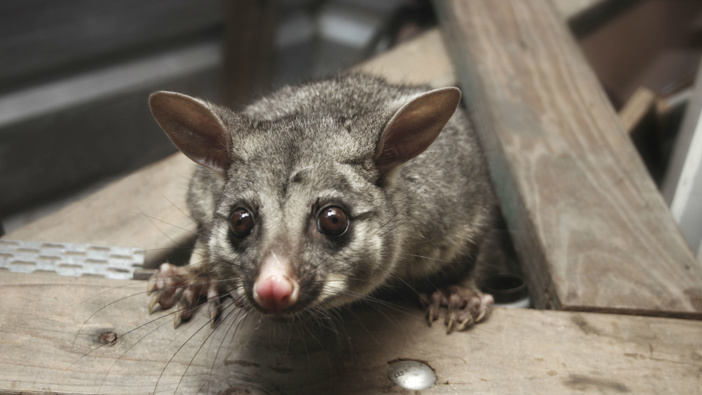Scientists have used artificial intelligence to map out how our predator-free dream can be realised – finding that smarter use of current tools could bring us much closer to the 2050 goal.
But they've also confirmed what conservationists have long warned: these won't be enough to completely rid the country of possums, rats and stoats estimated to kill some 26 million native birds every year.
The just-published study marks the first strategic assessment of how various predator-busting tools could be deployed across the country at scale over the next 10 to 15 years – but matched to different environments.
Using machine-learning techniques and sophisticated modelling, the researchers broke down the country into small units, then looked at what methods used in some areas could also work in others.
"The good news is that we can achieve much more with existing pest control tools," said the study's leader, Dr Zach Carter of the University of Auckland.
"Our research showed large swathes of land in both the North and South Islands will be suitable for traps or toxin distributed by air."
The team found that aerially-broadcast toxins already applied to about 12 per cent of New Zealand's land area – or 33,000sq km – could also be used to cover another 26,000sq km.
The bad news: predator-proof "exclusion" fences were only suitable for about 500sq km – or 0.2 per cent of the mainland – and 29,000 sq km of pest-invaded land was likely unsuitable for any measures we currently had.
In these typically rugged and remote places, poisoning, trapping and fencing wouldn't be enough to wipe out pest populations that had grown in the absence of intensive control.
/cloudfront-ap-southeast-2.images.arcpublishing.com/nzme/36RFQ5LJK5I5NYE77MBIL3GO6Y.jpg)
- Why tiny mice pose a big headache for NZ's war on pests
- Unwelcome visitor: Possum's wild night of house havoc after chimney entry
Aerially-broadcast toxins already applied to about 12 per cent of New Zealand's land area - or 33,000sq km - could also be used to cover another 26,000sq km. Photo / John Stone
"There are some spots that are extremely difficult to get to," Carter said.
"For these highly remote and inaccessible locations, we are going to need some new tools – new technologies, or the novel application of existing tools."
The Government's wider 2050 strategy focuses on mobilising groups and setting up collaborations around the country; developing "new and transformational tools and techniques" to eradicate the pests; and then applying these at scale across the countryside.
It also sought a "breakthrough science solution" capable of removing at least one small mammal predator from the mainland – and an accompanying action plan to the strategy set out seven specific goals for 2025.
A report last year found that just one of those – increasing the area in which predators were suppressed by one million hectares – had been achieved, with others still progressing.
But another goal - clearing all our uninhabited offshore islands - wouldn't be achieved within the next four years, and there still wasn't a single science solution capable of changing the game.
"Our research shows that there may indeed be limitations in our existing pest control toolbox," Carter said.
"However, this study affirms many of the weaknesses that are currently being addressed – namely that we need tools capable of controlling pests in highly remote areas and for extended periods of time."
Because we were working to overcome such hurdles, Carter saw New Zealand as making generally good progress toward the 2050 milestone.
Study co-author Professor James Russell said there was already "excellent" pest control coverage across the mainland.
Work by various groups, like Zero Invasive Predators in South Westland, had demonstrated it was possible to purge pests across tens of thousands of hectares, he said.
"I think our large inhabited islands, like Aotea, Waiheke, Rakiura, Rekohu, are the opportunities we should immediately be pursuing for translating pest control over large areas into permanent eradication."
Still, that we didn't have the tools needed to even suppress pest predators at national-scale was a "critically important finding", said Professor Dan Tompkins, the science director of Predator Free 2050, the Crown-owned company helping guide the effort.
/cloudfront-ap-southeast-2.images.arcpublishing.com/nzme/VENLMIELRK5F2ZTBYNFGAGVYKQ.jpg)
University of Auckland conservation biologist Professor James Russell. Photo / Supplied
Tompkins said a focus on scientific breakthroughs was "urgently needed" to ensure the mid-century goal could be reached on time – a point scientists have repeatedly made.
Last year, Carter led a study that found current efforts might only succeed in clearing rats from 14 out of the 74 islands they remain on, by 2050.
A separate scientific review in 2019 also found today's approaches would fall short, and singled out some genetic techniques – although the most promising ones could still be a decade or two away.
One ongoing project by Otago University scientists, and recently awarded more funding from Predator Free 2050, explored the possibility of creating and spreading specific genes among possums that led to reduced fitness and gradual population decline.
Other oft-discussed genetic tools include producing a "Trojan female" - whereby all male offspring are infertile - and species-specific toxins, such as norbormide, which could be highly effective and target only rats.
But using these in New Zealand's environment would likely require further development, legislative changes, and widespread public acceptance – and the Government has no plans to review regulatory settings around gene editing for pest control.
In any case, the authors of the latest study, which didn't look at the efficacy of tools themselves but rather where they were used, emphasised there were many more gains we could make in the short-term.
"Much of what we need to focus on is targeting pests at low densities," Carter said.
"Tools such as highly-attractive lures – that are irresistible to specific pest species and can draw them in from far away – may be a game changer.
"Our research lays the foundation for such transformative technologies that will be used in conjunction with existing toolsets."
The purpose of these next-generation tools might be just to remove the last survivors in certain areas – especially remote ones, Russell said.
"It might be monitoring devices with key design features such as real-time analytics and response - like identifying a rat has walked past and then delivering toxin while simultaneously satellite reporting this."
Carter said New Zealand remained locked in a "war of attrition" with pest predators, which have largely obliterated our mainland native bird populations – while also helping drive 84 per cent of our remaining reptile species close to extinction.
"Eradicating pests from New Zealand would benefit these species by order of magnitude in their numbers and locations," Russell added.
"But the pest impacts are not only on biodiversity, rats are a major human nuisance while possums are a major agricultural pest through spreading bovine tuberculosis.
"The costs are not only the damage they do, but also how much money we spend trying to manage them – costs currently in the millions of dollars per year."
- by Jamie Morton, NZ Herald
Take your Radio, Podcasts and Music with you










